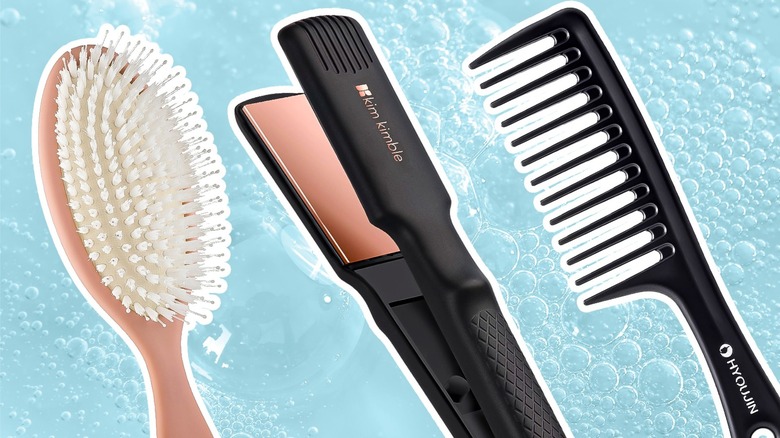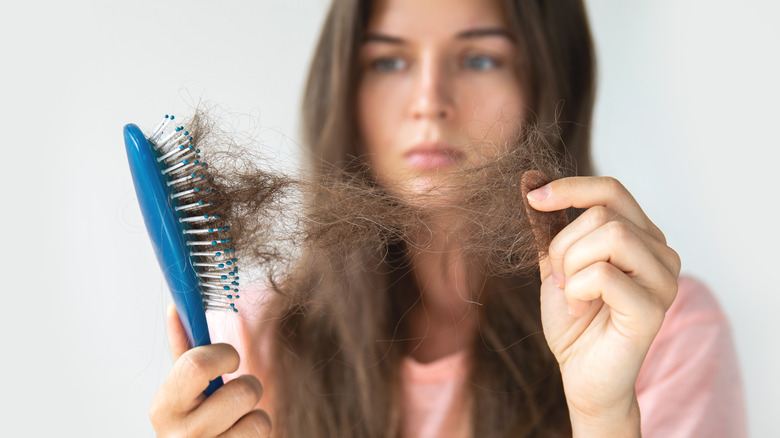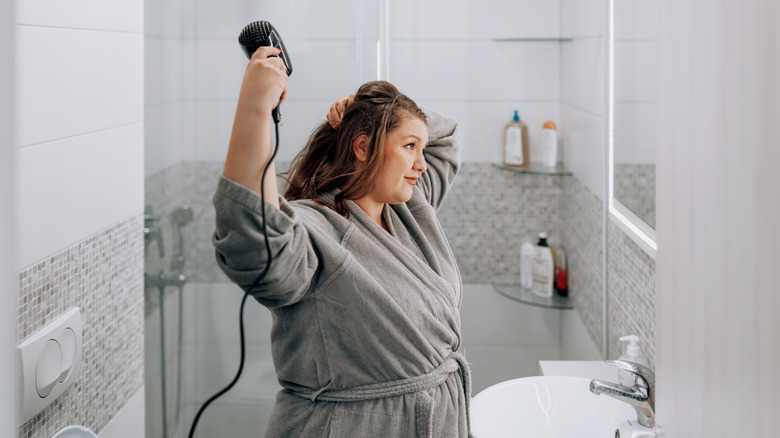How Often Should We Be Cleaning Our Most-Used Hair Tools?
In 2021, a TikTok clip showing a woman washing her dirty hairbrushes went viral. Viewers were stunned when the hot, soapy water used to soak the brushes turned an unpleasant shade of brown, serving as an important reminder that your favorite hair tools can hold copious amounts of oil and dirt — and that grime can be transferred to your precious locks.
Clearly, it's a good idea to wash your hair tools and appliances, but how often is enough (aka how frequently should you clean them to avoid the grimy-brown-water effect seen in the TikTok video)? Bridget Brager, a professional hairstylist, offered a general rule to Fashionista: "All in all, aim to cleanse your tools and brushes every one to three weeks for best styling results. The more you use them, the more you might have to clean them."
However, this guidance leaves some room for interpretation — is weekly best, or is once or twice a month good enough? And what about tools like curling wands or straighteners that might not be in your daily rotation? The answers depend on your personal hair care habits and styling regimen.
Hair tools require regular cleanings
Brushes and combs are the hard-working tools that keep our manes healthy and free of tangles, but they can't do their job when covered in invisible dirt and product build-up. Therefore, it's crucial to keep them clean every day — yes, every day. Trey Gillen, an artistic director of education at haircare brand Sachajuan, told Martha Stewart that it's best to remove any strands of loose hair from the bristles each day. For a deeper clean, he suggests soaking the brushes in soapy water once a month.
If you routinely rake your styling brush through unwashed, product-covered hair, however, plan for more frequent washes. Brian O'Connor, hairstylist and co-founder and chief innovation officer of Good Dye Young, revealed to Allure that you should clean brushes at least every two weeks if you tend to use a lot of hair products.
Hairbrushes and combs are a good starting point but don't forget your heat-styling tools. If you use your blow dryer every other day, remove any trapped hair and debris at least every three weeks, Paola Pinto, education director at Rush Hair, shared with Bustle. As for irons and other styling tools, Steve Elstein, vice president of product development and research at ghd, told the outlet that it's best to check for dust and build-up a couple of times each month, particularly if you use them regularly. Simply wipe the tools with a cloth and nail varnish remover to remove leftover product, oils, and dirt.
What happens if you forget to clean your hair tools?
Some dead giveaways that your hair tools are dirty include trapped, matted hair (such as in brush bristles or even wound around straightening irons) and a burning smell coming from heated devices. However, hairspray, dead skin cells, and other dirty build-up might not be as obvious. This can make it easy to forget to clean your hair tools, but that's a mistake you don't want to make.
"The risk of not cleaning your tools regularly is that it can damage your hair severely," Bridget Brager explained to Fashionista. For instance, a clogged hair dryer might require extra-long drying sessions, exposing your strands to more damaging heat. "In the long run, to keep your hair in the best shape possible your tools have to work at peak performance. The only way they can do that is if you are caring for and maintaining them."
Dirty tools can also make your locks dirty. A hairspray-coated brush can transfer hairspray to your mane, and a dusty blow dryer might disperse dust particles on your freshly washed hair. Bacteria is another concern to keep in mind. "Cumulative bacteria will form on any utensils that aren't cleaned over a certain amount of time," got2b stylist Larry Sims told StyleCaster. "Floating bacteria will settle, so it's important to clean your tools on a regular basis." Now excuse us while we dunk our hairbrushes in soapy water.


